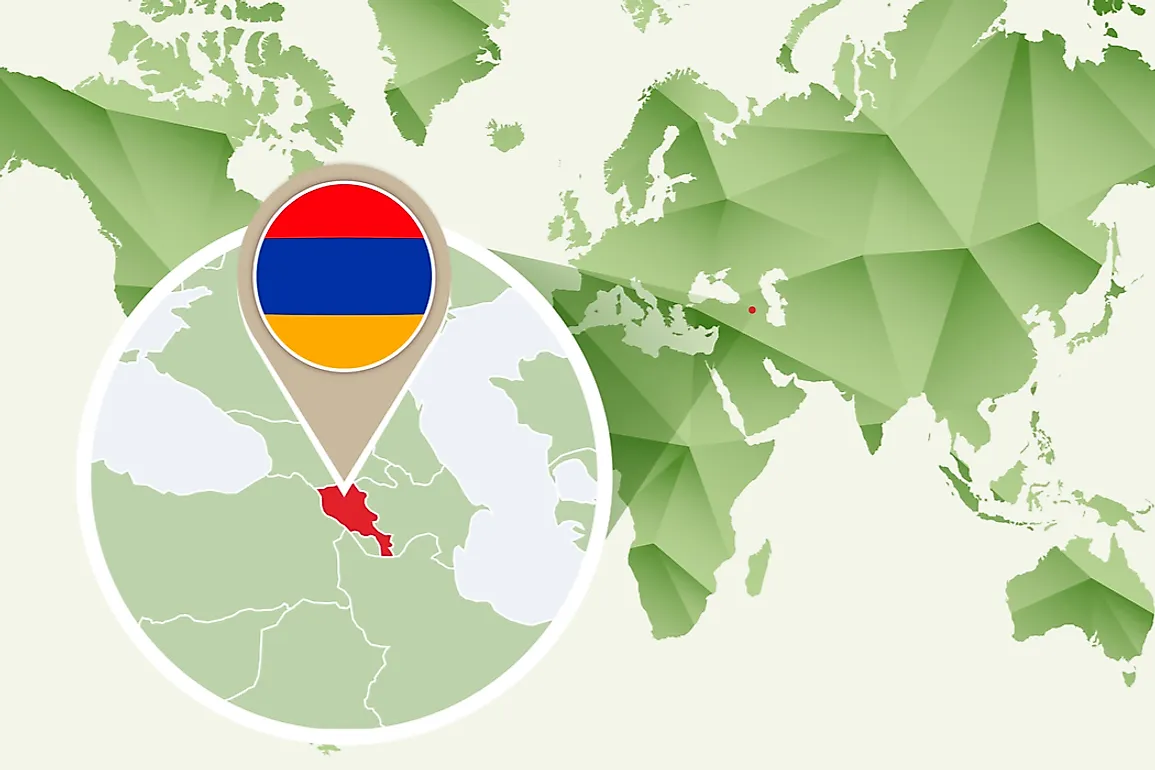Which Continent Is Armenia In?

Armenia is a country in West Asia. It is on the geopolitical Transcaucasus region. Armenia is in the southern areas of the Caucasus Mountains with its lowlands located right between the Caspian Sea and the Black Sea, on the northeastern parts of Armenian Highlands. The Caucasus together with its coast on the Black Sea is considered to be the unofficial boundary between Asia and Europe. Therefore many geographers consider this entire area including Armenia to be part of Asia especially since the Caucasus Mountains are the natural border between the two continents.
Geography
The country is bordered to the south by Iran, to the eastern side by Azerbaijan and Republic of Artsakh, to the north by Georgia and the western side by Turkey. Armenia occupies an area of about 11,484 sq miles of the mountainous terrain with few forests and fast-moving rivers. Armenia rises to about 13,419 ft above sea level at Aragats Mountain with no place in the country being below 1,280 ft. Armenia’s average elevation is the tenth highest globally.
Throughout history, the Assyrians have referred to the country as ‘’Nain’’ which means ‘’land of rivers and lakes’’. It is home to many rivers with the longest being Arax river which forms part of the Iran-Armenia and the Turkey-Armenia borders. Its main tributaries in Armenia include Vorotan, Azat, Kasagh and Akhurian rivers among others. The largest lake in Armenian is Lake Sevan. Historically Mount Ararat was part of the country, but currently, it is in Turkey, and visible from Armenia. The Armenians regard it as a symbol of their land, and presently, it is an Armenian national emblem.
History
Armenia is a democratic country with ancient cultural heritage. The Armenian kingdom reached its peak during the first century, under Tigranes II, when it became the first state to adopt Christianity as their official religion in the year 301. From the sixteenth to the seventeenth centuries the Armenian homeland (made up of Western and Eastern Armenia) came under the rule of the Iranian and Ottoman empires. The Russian empire conquered Eastern Armenia while the Ottoman Empire ruled over Western Armenia by the nineteenth century. After the Russian Revolution in 1918, all the non-Russian states became independent, and this resulted in the establishment of the Republic of Armenia. Armenia became the founding members of the Soviet Union in 1922 when the Transcaucasian state (which was formed in 1920) was dissolved. All the Transcaucasian countries joined the Soviet Union. Present-Day Armenia gained their independence in 1991 after the Soviet Union was dissolved.
Demographics
Armenia is the third most populous former Soviet republic with a population of over 2,924,816. Over the last decades, Armenia has experienced a population decline due to emigration after the Soviet Union was dissolved, but since 2012, its population has been increasing. Armenia has a significant Diaspora population of over eight million with a majority of Armenians living in Brazil, Turkey, Ukraine, Cyprus, Australia, and Greece among other nations. The most prominent ethnic group in the country making up over 98.1% of the population is the Armenians followed by the Yazidis (1.2%) and the Russians (0.4%). Other minority groups include Jews, Assyrians, Belarusians, and Greeks among others.











